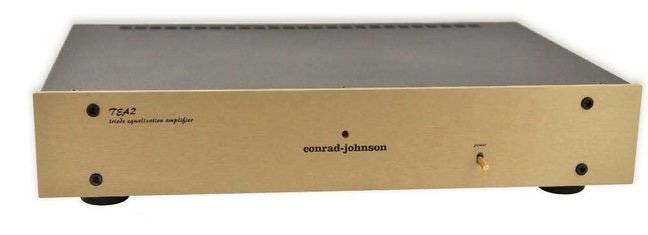Full disclosure: I’ve been a CJ owner (now former) and fan for decades. I’m currently using their ET3 preamplifier in my system, and for a great many years before that I used their PV-11. Do I think CJ is the be all end all of hi-fi brands? Certainly not. I recently let go of my CJ tube amp when I found better sound with a solid state vintage unit, and I’m now outputting the line level signal from my ET3 to the same vintage unit because also I like the sound of the preamplifier in that unit better.
But I do think CJ makes very good equipment that is well built and reliably good sounding, and it may be their phono stages where they shine the brightest. The phono stage in my ET3 certainly has its limitations in the way of dynamic range and solidity, but it also has many of the qualities a good phono preamp should have in its spacious, open sound, transparency and tonal sweetness. CJ phono stages are in my experience, a pleasure to listen to, and likely why I’ve always found CJ’s motto “It Just Sounds Right” a fitting one.
I recently had the opportunity to demo one of CJ’s current model phono preamplifiers – the TEA2. The unit comes in 3 different versions with the entry level model, the one I borrowed, retailing for $4250. You can read about the different versions of the TEA2 on CJ’s website and also find a link to a much more in depth review of the TEA2 by Roy Gregory of HiFi+. Roy clearly understands the design and the technology employed by CJ and how it translates into the TEA2’s sound, and he discusses the differences in the build and sound of each of the TEA2 versions.
What I’d say about the TEA2 is that it is a very, very good sounding phono preamplifier and certainly worthy of serious consideration at this price point, especially if you’re a fan of tubes. It also demolishes another contender in this category, the $5k Solid State Boulder 508, which I recently reviewed here.
What makes the TEA2 so very good? For one, it’s tonally accurate. Instruments sound like they should and have clean transient edges, good weight and clear placement in the soundstage. The TEA2 also presents the soundstage in an open, transparent way that translates to great musicality and coherence. Classical records, the achilles heel of most phono preamps (and most systems), were an absolute joy to listen to with the TEA2. String texture was lush and rosiny, horns were sweet sounding with clear, sharp, transient edges. The bass drum had good weight and impact and percussion instruments were strikingly present and real sounding, with the TEA2 providing loads of air and space around them and presenting them with force and accuracy in seemingly every nook and cranny of the concert hall.
One particular thing that struck me listening to my system with the TEA2 was how it managed to give orchestral performances a more unified presentation than does my ET3. Rachmaninoff’s Piano Concerto No. 1 with Byron Janis leading the way with the Reiner-conducted Chicago Symphony, a stellar RCA recording and performance with moment upon moment of excitement and intrigue, somehow managed to come together in a way I never anticipated. It’s as though all this time I’d been listening to the performance as a sum of its parts, and now, with the TEA2, I was hearing it as a the unified whole.
Weaknesses? To be honest the only reason I can even allude to the weaknesses of the TEA2, in part due to my limited experience testing phono preamps, is the fact that I recently tested an even better phono preamp than the TEA2, one which I’ll no doubt write about here before too long. For now, suffice it to say that the TEA2 mainly suffers from the limitations of any piece of tube equipment. There’s a subtle lack of solidity, especially at the lower frequencies. Having heard a solid state phono preamp with more bass extension, I know the bass can go lower and with greater impact, and the TEA2, or at least this version of it, just can’t quite get there.
For many audiophiles this might be a fairly small quibble, and perhaps just a simple tradeoff. I must admit that the way that tube equipment, and CJ’s TEA2 in particular, gives the impression of a big, open, 3D soundstage has an enduring appeal for me. It’s a quality hard to come by with solid state and one that may ultimately find me keeping a tube phono preamp in my system. In the meantime I plan to keep striving for better sound, and I hope that my experience with the TEA2, showing me that my system, with the right phono preamp, is capable of so much more, is a harbinger of even better sound to come.
